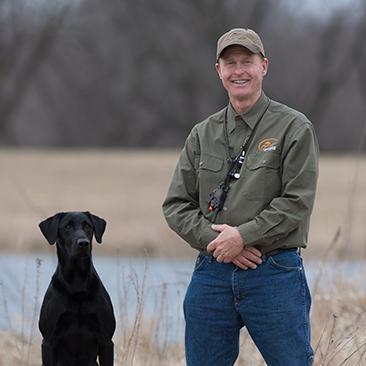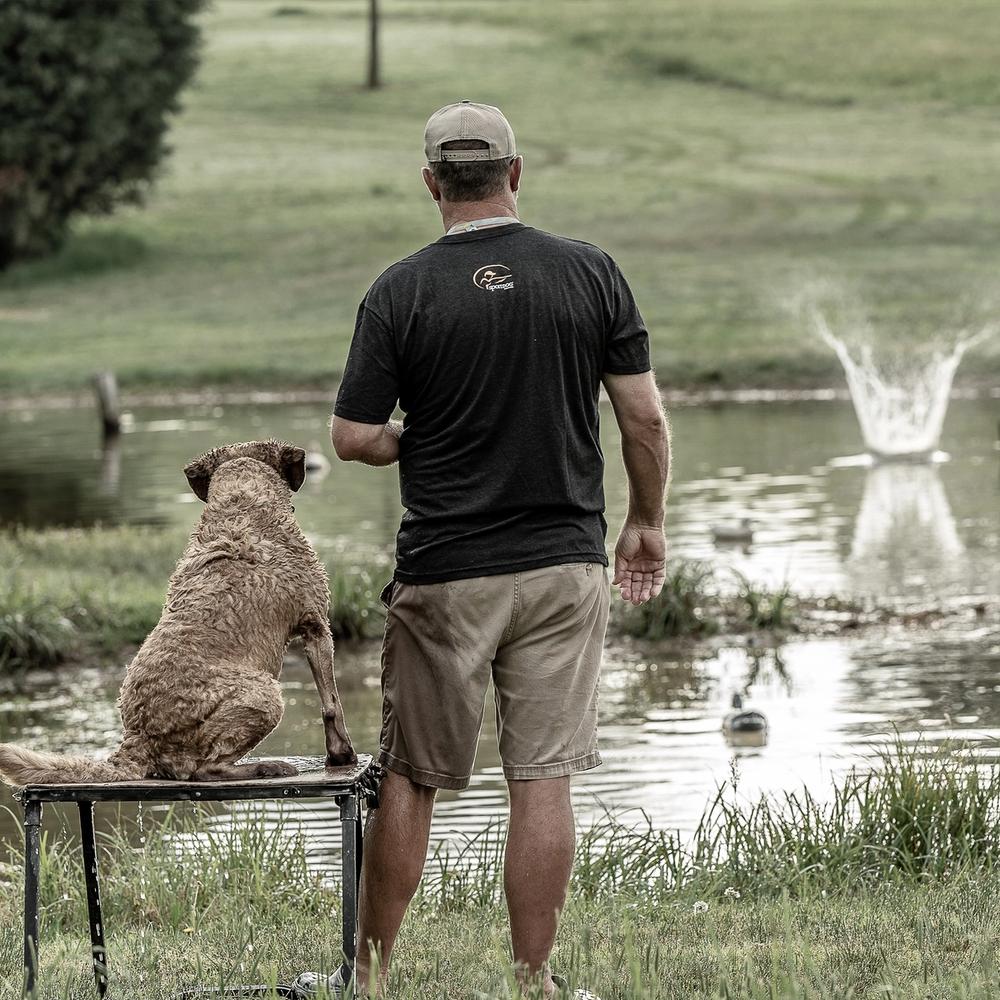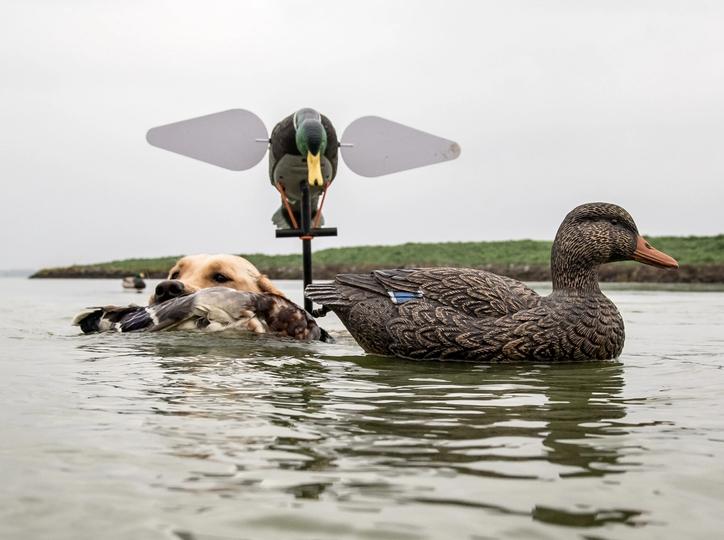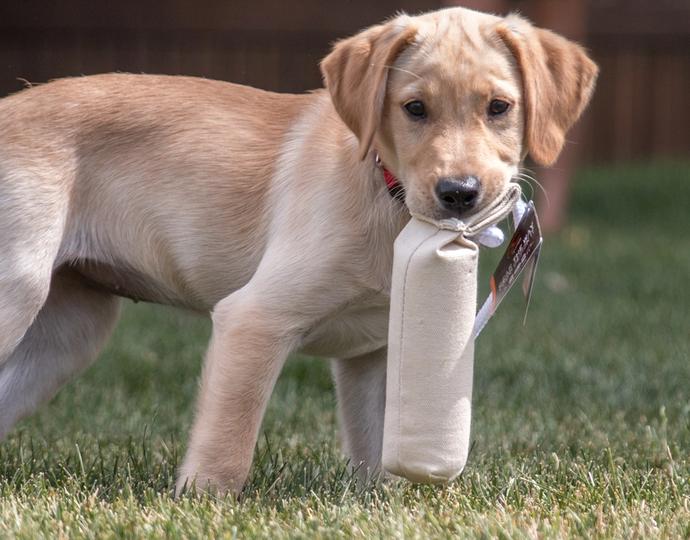
Retriever Training: The Transition to Water
Posted by Tom DokkenRetrievers love water, so you wouldn’t think that transitioning from land retrievers to water retrieves would be difficult. It isn’t, as long as you follow a few simple guidelines.
The key to a smooth introduction and continued improvement on water retrieves is to work in baby steps, just like you did when you were first training your dog as a pup on land retrieves. You didn’t start teaching land retrieves on marks that were hundreds of yards. The same concept applies to the transition to water training. Just as importantly, your dog’s technical performance on land, things such as obedience and retrieving to hand, must be in place before you can expect good performance in the water.
Before you work on water retrieving, you also want to make sure your dog is confident, that he’s spent plenty of time in the water and that he’s learned how to be a good swimmer. You can’t work on retrieving skills if your dog is still trying to learn to swim efficiently. So get that out of the way first.
For the first retrieves in the water, make them short and make sure your dog is having fun. As far as troubleshooting goes, think of it like this: Expect any challenges you had on land to repeat themselves in the water. Don’t get upset or lose your temper. Instead, anticipate problems you might encounter and be prepared to deal with them.
One of the first problems you might run into is that as soon as the dog comes out of the water, his instinct will be to drop the dummy so he can shake the water off. A lot of dogs then will not want to pick up the dummy again. This is often true even of dogs that have been delivering to hand perfectly on land. To combat this problem, I’ll put on my waders and go a short ways into the water so that the dog doesn’t have to come all the way onto land to deliver the dummy. Gradually I’ll work my way back toward shore with each retrieve and continue to expect him to deliver to hand each time. I do all of this with the dog dragging a 30-foot check cord so I can grab it and maintain control if necessary.
When your dog is retrieving confidently and delivering to hand, then you can work on adding distance to the retrieves. You’ll need a helper out in a boat, and that helper is going to gradually move farther away after each successful retrieve. As distances increase, the next challenge you might face is that your dog will swim just so far and then start paddling around looking for the dummy in the same area as before. This is a problem you might not have had on land because there it was very simple to lengthen the retrieves by moving yourself back. Now your helper in the boat is the one increasing the distance.
Also keep in mind that down at your dog’s eye level, everything looks the same. There’s no variation in the water, no terrain features for your dog to key on as he swims out for the retrieve. For that reason, you need to help your dog succeed. Remember, the early stages of water training are all about building confidence. So one thing you can do to help him is to always use white dummies. Everything about this is visual, and white will really stand out. If you use orange dummies, they appear gray to a dog and he won’t be able to see them as easily. Add to that the fact that there might be some ripples or waves on the water. Suddenly, what seems like a very short, simple retrieve has become a challenge for your dog. So help him out early. You can work on more difficult drills later.
You also want to be sure that your helper is very tuned in to what is going on so that if the dog needs encouragement your helper can yell or clap his hands to get the dog’s attention to keep him from stopping short or, worse yet, turning around and swimming back to you.
These are the first steps in building a good water dog. In a future article I’ll talk about the next steps we take at our training grounds to build even more confidence and get your retriever ready for more challenging situations.

Tom Dokken
Northfield, MN
Dokken brings more than 45 years of retriever-training experience to the SportDOG team. He is well known as the inventor of Dokken’s Deadfowl Trainer, which has become standard equipment for retriever trainers everywhere. He is the owner of Dokken Dog Supply and Dokken’s Oak Ridge Kennels, the largest gun dog...
Related Articles

Building a Steady Retriever
by Tom Dokken
A retriever that remains calm in a duck blind and concentrates on watching birds fall is a joy to hunt with. In a perfect world, that’s how all retrievers would behave. While a steady retriever is something that most hunters want, the reality is that very few retrievers are truly...

Don't Forget to Introduce Your Duck Dog to Decoys
by The SportDOG Staff
In our excitement to build a retriever into a top-notch waterfowl dog, it’s easy to forget small but important details. For example, your dog might make you proud when he completes a long retrieve. But the first time you ask him to swim through four dozen decoys to retrieve a...

Training Your Retriever to Dummies
by The SportDOG Staff
Training a retriever can be one of the most rewarding experiences any hunter can have. There are no secrets involved: just patience, repetition, perseverance, consistency and the ability to anticipate reaction. In short, the trainer needs to be just a little smarter than his pupil. This is not always as...

Keeping the Fun in Retriever Training
by The SportDOG Staff
Wouldn’t it be nice in the middle of a rough day if someone stopped by and said a few words that made all your cares go away? Instantly your negative feelings would disappear and you’d be happy. Well, in retriever training, there is something that can have that effect on...
